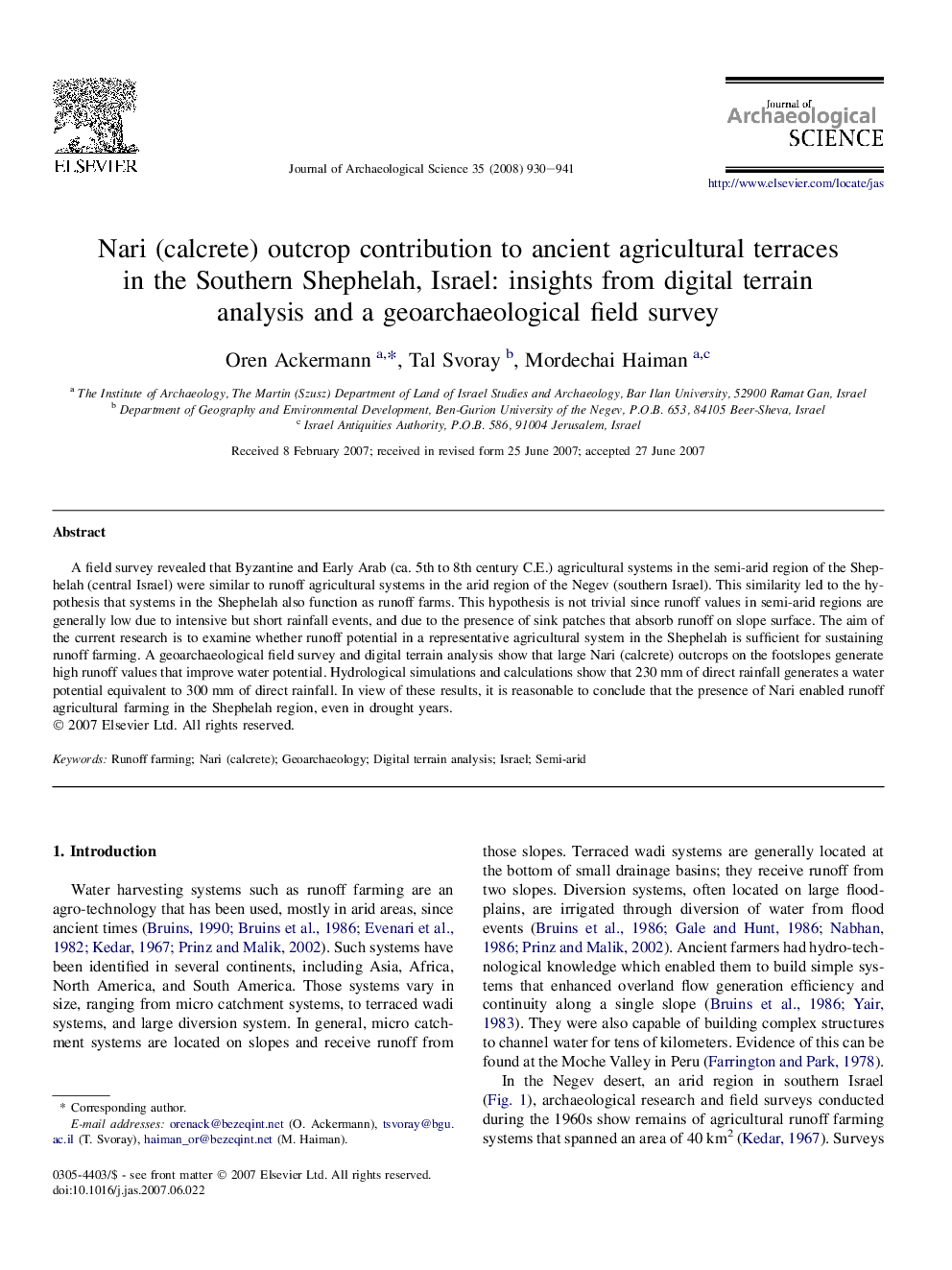| Article ID | Journal | Published Year | Pages | File Type |
|---|---|---|---|---|
| 1037450 | Journal of Archaeological Science | 2008 | 12 Pages |
A field survey revealed that Byzantine and Early Arab (ca. 5th to 8th century C.E.) agricultural systems in the semi-arid region of the Shephelah (central Israel) were similar to runoff agricultural systems in the arid region of the Negev (southern Israel). This similarity led to the hypothesis that systems in the Shephelah also function as runoff farms. This hypothesis is not trivial since runoff values in semi-arid regions are generally low due to intensive but short rainfall events, and due to the presence of sink patches that absorb runoff on slope surface. The aim of the current research is to examine whether runoff potential in a representative agricultural system in the Shephelah is sufficient for sustaining runoff farming. A geoarchaeological field survey and digital terrain analysis show that large Nari (calcrete) outcrops on the footslopes generate high runoff values that improve water potential. Hydrological simulations and calculations show that 230 mm of direct rainfall generates a water potential equivalent to 300 mm of direct rainfall. In view of these results, it is reasonable to conclude that the presence of Nari enabled runoff agricultural farming in the Shephelah region, even in drought years.
